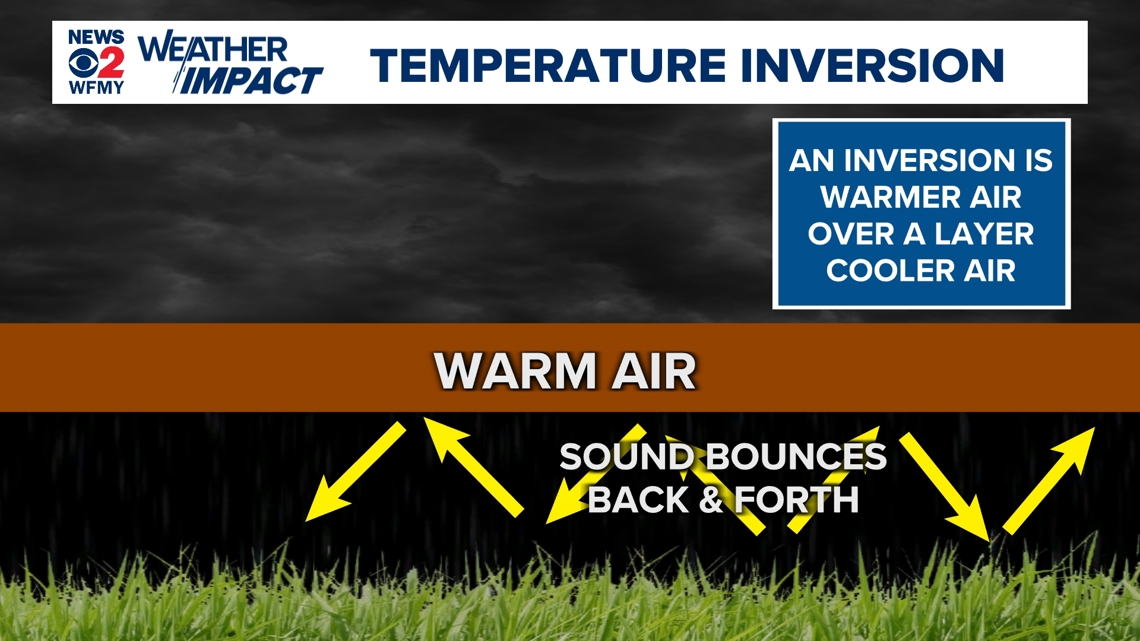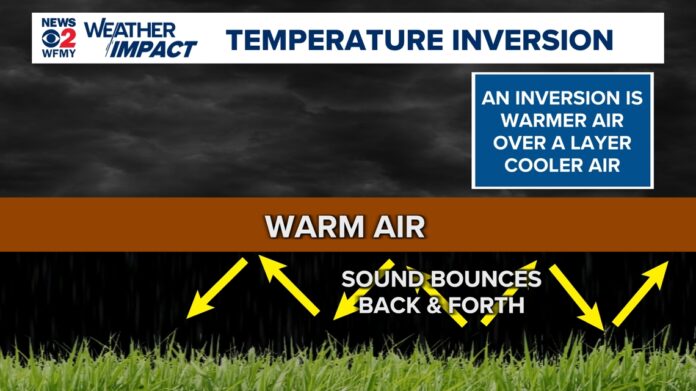GREENSBORO, N.C. —
Why Does Thunder Sound Louder in the Cold?
During the colder months, it’s not often we gets storms that produce lightning and thunder. However, when we do, have you ever noticed thunder sounding or lasting longer?
You’re not imagining things! The reason this is able to occur is because of a temperature inversion.
Click here for a full video explanation!
What’s a Temperature Inversion?
Normally, as you go higher into the atmosphere the air gets cooler, but during a temperature inversion, warm air sits above cooler air near the ground. This shift in temperature plays a key role in how sound behaves in the atmosphere.
When lightning strikes, the air is heated rapidly (up to 30,000 degrees Celsius), which causes the air to expand quickly, creating the shockwave we hear as thunder. Typically this sound travels upward and dissipates.
During a temperature inversion, the warm air acts as a sound barrier, reflecting the sound waves back toward the ground.


Thunder: Louder & More Intense
This reflected sound back toward the surface makes the thunder sound louder and more intense. It can also echo longer as it bounces between air layers. This is why you may notice thunder rumbling for what seems like ages, especially during the colder months.
So next time you hear that deep, rumbling thunder on a chilly day, you’ll know exactly why it sounds different–and it’s all thanks to the inversion in the atmosphere!



